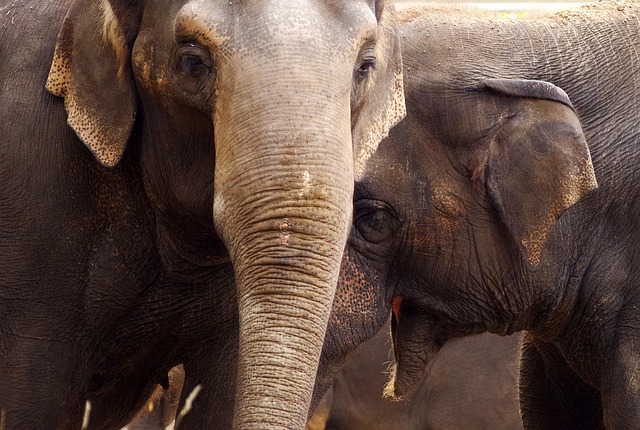Unraveling the Enigma of Elephant Foot Health
Elephant foot care, a crucial yet often overlooked aspect of pachyderm wellbeing, has become a growing concern in both wild and captive populations. This article delves into the intricate world of elephant podiatry, exploring the unique challenges these gentle giants face and the innovative approaches being developed to ensure their locomotor health.

The Complex Architecture of Elephant Feet
Elephant feet are masterpieces of biological design. Each foot contains five toes, though not all are visible externally. The elephant’s weight is distributed across a tough, fatty pad that acts as a shock absorber. This pad is covered with a thick, keratinized sole that protects against rough terrain. The nails, often mistaken for hooves, play a crucial role in traction and digging.
Interestingly, elephants walk on their tiptoes, with the heel pad bearing most of the weight. This unique locomotion allows for their characteristic silent movement, despite their massive size. The foot’s structure also enables elephants to “listen” to vibrations through the ground, an essential communication method in the wild.
Challenges in Captivity: A Podiatric Perspective
Captive elephants face unique foot health challenges. The hard, unyielding surfaces of many enclosures can lead to pressure sores, nail cracks, and pad wear. Lack of exercise and obesity compound these issues, putting excessive strain on the feet. Moreover, the absence of natural wear patterns can result in overgrown nails and pads, requiring regular human intervention.
Foot abscesses are a particularly severe problem in captive elephants. These painful infections can develop when bacteria enter through cracks in the pad or nails. If left untreated, they can lead to severe lameness and even systemic illness. The challenge lies in early detection, as elephants are adept at hiding signs of discomfort.
Wild Elephants: Environmental Pressures on Foot Health
While wild elephants generally maintain better foot health due to natural behaviors and diverse terrain, they face their own set of challenges. Climate change and habitat loss are altering the landscapes these animals have evolved to navigate. Increased human-elephant conflict often results in injuries, including to the feet, which can be devastating in the wild.
Poaching presents another threat to foot health. The stress of living in conflict zones can lead to compromised immune systems, making elephants more susceptible to foot infections. Additionally, snares set for other animals can cause severe foot injuries when accidentally encountered by elephants.
Innovations in Elephant Podiatry
The field of elephant foot care is evolving rapidly. Zoos and sanctuaries are implementing novel approaches to mimic natural conditions. These include installing softer substrates, creating varied topographies within enclosures, and designing puzzle feeders that encourage natural foraging behaviors and foot movement.
Cutting-edge technology is also making its way into elephant podiatry. Thermal imaging cameras are being used to detect inflammation early, allowing for prompt treatment of budding foot problems. 3D-printed prosthetics and orthotics are being developed for elephants with severe foot deformities or injuries, offering hope for animals that might otherwise face euthanasia.
The Economic Impact of Elephant Foot Care
The growing emphasis on elephant foot health has spawned a niche industry. Specialized elephant pedicure tools, often custom-made, can range from $500 to $5000 per set. Facilities investing in state-of-the-art flooring systems for elephant enclosures may spend upwards of $100,000 for larger exhibits.
This focus on foot care also impacts eco-tourism. Sanctuaries that prioritize elephant wellbeing, including exemplary foot care practices, are seeing increased visitor numbers and donations. The market for ethically sourced, foot-healthy elephant experiences is estimated to be worth millions annually, reflecting a growing public awareness of animal welfare issues.
Training the Next Generation of Elephant Podiatrists
As the importance of elephant foot health gains recognition, specialized training programs are emerging. Veterinary schools are beginning to offer courses in megavertebrate podiatry, with some institutions developing full certificate programs. These courses combine traditional veterinary knowledge with the latest research in biomechanics and materials science.
Hands-on experience remains crucial. Aspiring elephant podiatrists often undertake internships at zoos or sanctuaries, learning the nuances of elephant behavior and the practical challenges of working with such large animals. This blend of academic knowledge and practical skills is creating a new generation of specialists dedicated to keeping elephants on their feet and thriving.
The Future of Elephant Foot Care
As our understanding of elephant physiology deepens, so too does our ability to care for these magnificent creatures. Research into wild elephant populations is providing valuable insights into natural foot care behaviors, which are being translated into best practices for captive care. There’s a growing recognition that foot health is not just about treating problems but about creating environments that promote overall wellbeing.
The future may see the development of “smart” enclosures that automatically adjust terrain and substrate based on an elephant’s gait and weight distribution. Wearable sensors could provide real-time data on foot health, allowing for predictive care rather than reactive treatment. As we continue to unravel the enigma of elephant foot health, we not only improve the lives of these incredible animals but also deepen our connection to and understanding of the natural world.





